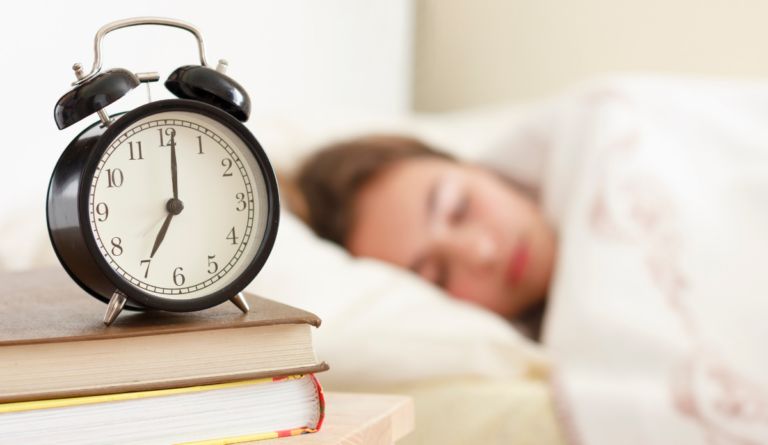Wake Up Call: The Case for Later School Start Times
Later school start times may improve students' weight, eating habits, and exercise behaviors.

Read Time: 4 minutes
Published:
My high school started class at 7:15am. Waking up in time to catch the 6am bus left me exhausted, to the point where I napped consistently when I got home. Even today, I wonder why high school can’t start later.
Apparently, it can. Individual districts like Pittsburgh recently changed start times: high schools will now begin at 7:40am instead of their usual 7:15am start. State policymakers have also stepped in, with states like California and Florida mandating later starts for both middle and high school.
Their reason? Delaying school starts is associated with improved sleep, reducing students’ likelihood of feeling tired, oversleeping, and being late to class.
According to the CDC, high schoolers should get 8 to 10 hours of sleep each night. But 77.9% of high school students sleep less than 8 hours. And early school days might be why. The American Medical Association, American Academy of Pediatrics, and American Academy of Sleep Medicine all recommend that high schools begin after 8:30am. But reports found that the average start time for American high schools was roughly 8am.
Worse sleeping patterns are associated with poor mental and physical health. Some studies even suggest that short sleep duration–not sleeping the recommended hours for your age group–is a risk factor for obesity.
Building on this previous research, Rachel Widome and colleagues studied the impact of delayed starts on students’ weight, eating, and exercise behaviors. They compared 2 groups of Minnesota-area schools: two schools that delayed their start times versus three schools that kept a 7:30am start.
As more schools transition to later starts, there will be more data to address these concerns. But existing analyses suggest that the switch is worth it.
The research team recruited 9th grade students to complete surveys on eating and exercise behaviors during three consecutive spring semesters.
At baseline, all five schools started between 7:30 and 7:45am. By the first follow-up, one school delayed class by 65 minutes (starting at 8:50am) and one delayed class by 50 minutes (starting at 8:20am).
They found that by the third academic year, student behavior followed a similar trajectory across schools. In both school types, as students went from 9th grade to 11th grade, fewer students reported healthy behaviors, like eating breakfast, eating dinner with family at least 5 days a week, and eating vegetables daily. Simultaneously, more students reported unhealthy behaviors, like eating fast food at least once a week and lower physical activity. BMI also increased over time across all schools.
However, schools with later start times saw smaller decreases in these healthy behaviors as students aged. Students at these schools were more likely to eat breakfast at least 5 days a week, have dinner with their families, and be active at least 3 days a week. They were also less likely to eat fast food weekly.
If later start times can have benefits, why haven’t all schools pushed back their start times? Many of the fears are practical in nature. Parents worry that later school start times would conflict with their own work schedules. Administrators worry about the cost of switching schedules. Currently, start times for elementary, middle, and high schools are staggered. This means that school buses are staggered too, saving money on buses and bus drivers. And lastly, both parents and administrators worry about extracurricular activities like athletics that are normally held after school hours–would they need to begin later or get dropped entirely?
As more schools transition to later starts, there will be more data to address these concerns. But existing analyses suggest that the switch is worth it. Students report better sleep and health outcomes, and they perform better academically and have fewer car crashes. I was a night owl in high school, and looking back, I can certainly say that a later school start would have given me a lift.
Photo via Getty Images



